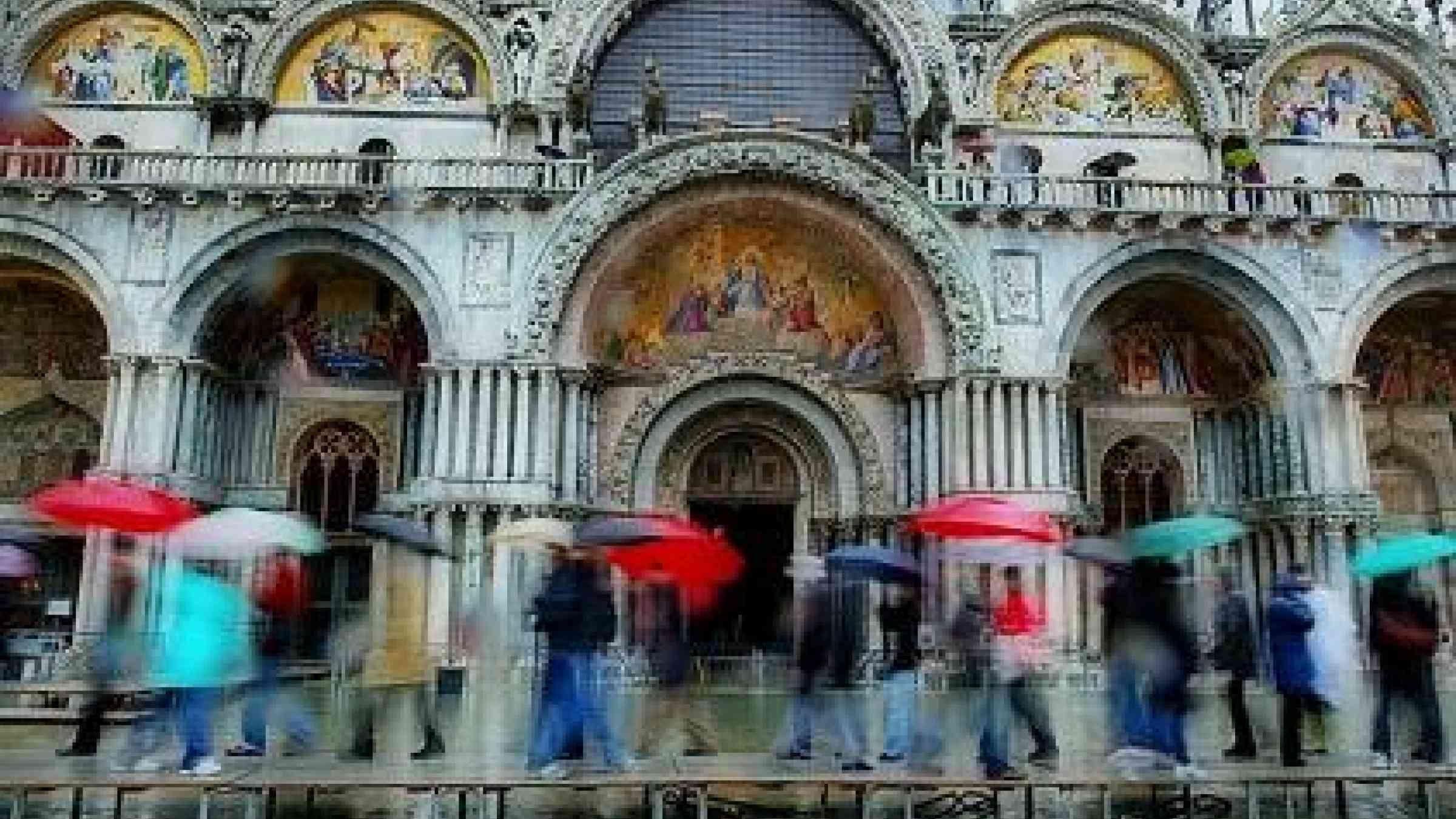Please help us improve PreventionWeb by taking this brief survey. Your input will allow us to better serve the needs of the DRR community.
Protect heritage, reduce risk

Venice is all too aware of the risk that floods pose to historic cities (Photo: Flickr/Roberto Trombetta)
PARIS, 15 October 2015 – Countries should strive to protect their heritage sites from natural and man-made hazards, according to experts aiming to advance Europe’s implementation of the Sendai Framework for Disaster Risk Reduction.
“There’s a long history of disasters affecting cultural heritage in Europe,” said Mr. Giovanni Boccardi, in charge of disaster risk and sustainable development at UNESCO’s World Heritage Centre.
“But most sites are not properly prepared,” he told the European Forum for Disaster Risk Reduction, which has just wrapped up its sixth annual meeting.
“The Sendai Framework is breaking new ground in recognizing the role of culture and cultural heritage as components of disaster risk management,” Mr. Boccardi said. “Now the question is implementation.”
The European Forum, made up of countries from the European Union and beyond, focused on how to achieve the goals of the Sendai Framework, a broad-ranging global agreement adopted in March with the aim of reducing disaster deaths and economic losses substantially by 2030.
The European Forum’s new implementation roadmap underlines the need to take cultural heritage into account when working to reduce disaster risk.
Europe is home to more than 500 of the 1,031 locations listed by UNESCO as World Heritage Sites. The roots of that label lie in a disaster: its founding document, the World Heritage Convention, was adopted after flooding in the historic Italian cities of Venice and Florence five decades ago.
“Overall, however, there’s been a lack of integration between the heritage sector and the disaster risk sector,” said Mr. Boccardi.
Damage to heritage sites is about far more than economic losses, underlined Czech delegate Mr. Pavel Danihelka, head of the Laboratory of Risk Research and Management at the Technical University of Ostrava.
Heavy flooding in the Czech Republic in 2002 cost around 100 million euros. Damaged sites including Prague’s Jewish Quarter, the Municipal Library, the National Theatre, the Malá Strana district and Terezin.
“For us, the indirect losses, the loss of historical objects, were in many ways more significant, because these are things that never come back,” said Mr. Danihelka.
The Czech Republic subsequently brought in a mapping system to correlate hazard risks and heritage sites, and provides online information about their flood-threated locations, in an effort to raise awareness across sectors and among the public.
More needs to be done, however, to head off other risks, noted Mr. Danihelka, citing recent research that showed failings in the fire prevention plans in 70% of heritage sites studied. Among them were inadequate escape routes – hard to install in historic buildings – or shortfalls in staff training.
“We need an overarching strategy for cultural heritage. We believe that with the help of the Sendai Framework, we’ll achieve that,” he said.
In Spain, an earthquake drove policy changes, said civil protection expert Luis Saenz de San Pedro Alba.
The 2011 quake in the southeastern town of Lorca caused extensive damage to its historic Espolón Tower, the Hermitage of San Clemente and the Convent of Virgen de Las Huertas. That underscored problems of coordination between different branches of the authorities and private owners, such as the Catholic Church. In January, Spain is due to roll out new heritage protection legislation linked to its seismic planning.
The Sendai Framework emphasizes the need for a whole-of-society approach to disaster risk reduction, with the private sector a key player.
“There is a need to engage private actors in this process, given that some cultural assets are privately-owned,” said Mr. Boccardi.
Keenly aware of its risks, Venice has adopted a range of structural and non-structural measures, including a mobile barrier on the Venice Lagoon and units of volunteer heritage protectors who back up the regular fire service.
“The world is facing more frequent and intense meteorological events. And due to climate change, some sites that were considered protected are not protected any more,” said Mr. Pierpaolo Campostrini, managing director of the Venice Lagoon research consortium.
“The Sendai Framework has set targets,” he added. “We can use innovation, and create jobs at the same time, while working to make cultural heritage more resilient.”
Explore further
Also featured on
Please note: Content is displayed as last posted by a PreventionWeb community member or editor. The views expressed therein are not necessarily those of UNDRR, PreventionWeb, or its sponsors. See our terms of use
Is this page useful?
Yes No Report an issue on this pageThank you. If you have 2 minutes, we would benefit from additional feedback (link opens in a new window).